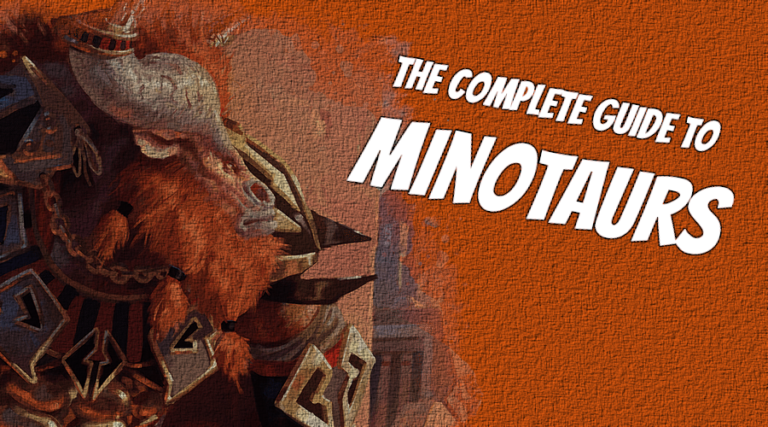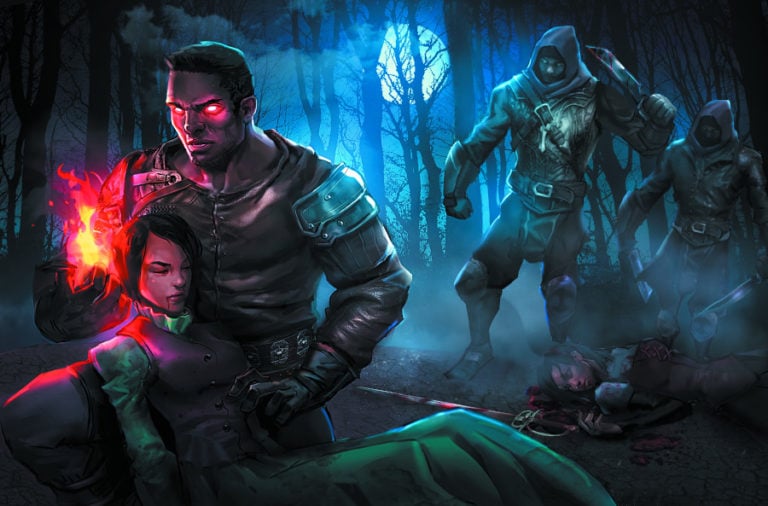College of Whispers 5E Guide | Rules, Tips, Builds, and More
Some things are best kept secret… No longer. The Xanathar’s Guide to Everything unleashed a subclass that hones in on the bard’s worst nemesis – abusing the good reputation of the Bard Name. The College of Whispers uses the Bard’s good reputation to mess with a community. They claim to be members of the College of Glamour, or Lore. Instead, they weave magic to acquire everyone’s closest-kept life experiences and use it against them. Rarely do they reveal their true origin, for the College of Whispers is not well-loved – by bards or anyone else. So, do you plan on graduating from this shady, subtle, and manipulative school? If so, read on.
Table of Contents
Find their Secrets: College of Whispers
The Whispers Bard is the one most focused on out-of-combat utility. It can buff their own damage, gain fantastic utility in social encounters, and even cast a pseudo-Dominate Monster effect. Unfortunately, the use of Bardic inspiration is somewhat constrained, and you lose a lot of combat potential when picking up this subclass. The only way to use this bard effectively is twofold; either your GM is incredibly creative and lets you work your abilities in, or the campaign is not combat-focused.

Psychic Blades
The ability that lets you spend Bardic inspiration is… Interesting. That’s a word for it.
When you join the College of Whispers at 3rd level, you gain the ability to make your weapon attacks magically toxic to a creature’s mind.
When you hit a creature with a weapon attack, you can expend one use of your Bardic Inspiration to deal an additional 2d6 (scaling with Inspiration die; 3d6 at 5th, 5d6 at 10th, 8d6 at 15th levels) psychic damage to that target. You can do so only once per round on your turn.
So… Sneak attack. But worse. And it spends your support resources. At least you don’t need advantage…?
Okay, so this ability is getting close to using Bardic Inspiration to modify damage. The College of Valour increases an allies’ damage by a single dice, but this almost keeps up with Sneak Attack dice. Much better burst damage! And it’s psychic damage too, meaning creatures with resistance to physical damage don’t resist this. That’s pretty darn useful! Bards don’t get many ways to deal with Swarms, so this could give your party better damage… Why this ability would work on a swarm is another story.
The problem is, of course, that your Bardic Inspiration dice are super good. Raising an attack roll by 1d6 after the roll is made is potent and could increase the damage of an ally from 0 to… A hit. In most cases, the damage increase of turning a miss into a hit is so much better than a pile of d6s. Especially when you save the Wizard’s Disintegrate from missing and turning the wall into swiss cheese, instead of the War Chief.
So, when would you use this ability? As I mentioned above, against combats with resistance to Physical damage, this gives you a burst option that deals more than Sneak Attack – Unless your rogue somehow found a weapon that deals Fire damage or something. In combats where a boss absolutely needs to die, throwing a Bardic Inspiration on your caster and then burning more Inspiration on your damage might not be a bad idea. Finally, at level 5, your Bardic Inspiration becomes a much more expendable resource. Most sessions have between 3 and 4 short rests, so your Inspiration count goes from 4-5 per day to 12-20. You might have a reason to spend a lot of Bardic Inspiration over the course of just a few turns.
Overall, it’s far from the worst way to spend your Inspiration dice. But… Not exactly the best.
Words of Terror
Also at level 3 is a… Weird utility option. Really flavorful, but extremely hard to use.
If you speak to a humanoid alone for at least 1 minute, you can attempt to seed paranoia and fear into its mind. At the end of the conversation, the target must succeed on a Wisdom saving throw against your spell save DC or be frightened of you or another creature of your choice. The target is frightened in this way for 1 hour, until it is attacked or damaged, or until it witnesses its allies being attacked or damaged.
If they succeed on the DC, they have no idea you tried to frighten it. And this refreshes on any rest.
Really quickly, let’s go over the Frightened Condition;
- A frightened creature has disadvantage on Ability Checks and Attack rolls while the source of its fear is within line of sight.
- The creature can’t willingly move closer to the source of its fear.
Okay, so… This isn’t exactly the best ability in combat-centric campaigns. Being able to talk with someone for 1 minute is rough, especially if they’re hostile to you. If your GM let’s you roll Diplomacy to avoid starting a fight, then this could be a fun way to reduce the size of the encounter by 1, if you successfully Intimidation them to run away – far enough that they don’t witness their allies being attacked. Otherwise, it might be tricky to use this ability right before a fight. And you don’t get the two major benefits of Frightened, since the person can’t even attempt to make Ability Checks and Attack rolls while seeing you from the other side of the dungeon.
Out of combat situations? Now that’s fun. For example, let’s say that you’re chatting with a noble who plans on poisoning the king. With this ability, you can instill fear in that person that makes them frightened of the King. Because of that, they don’t want to approach him. If they try to lie or slip poison into his drink without him noticing, they roll twice.
Another example is if you’re trying to mediate a war by talking to an Orc Warchief. If the town you’re defending just needs a little more time to prepare, you could theoretically make the Warchief afraid of the town’s leader. That keeps the Warchief from willingly approaching the town. If you’re creative with this ability, and avoid the damage clause, then you could make it work extremely well. You’ll also want to abuse Frighten’s “can’t willingly move closer” debuff, as it’s the most likely to be applicable in out-of-combat situations.
However, the fact that any kind of combat scenario turns this Frighten off is truly saddening. There is simply no way of using this to any degree of effectiveness in a fight. The social situations where this comes in handy are middling, and it only targets one creature, so the rest of their allies can fight without care. Try to target individuals or leaders with this ability if you want to maximize its effectiveness.
Funnily enough, it doesn’t explicitly say that you need to share a language with the humanoid for this to work. So… Yeah. If your GM doesn’t change things, you could get a bit of fun times out of just… not understanding the person, but somehow making them paranoid of someone.
Mantle of Whispers
The level 6 ability of this college has a lot of moving parts. This ability refreshes on any rest, just like Words of Terror.
At 6th level, you gain the ability to adopt a humanoid’s persona. When a humanoid dies within 30 feet of you, you can magically capture its shadow using your reaction. You retain this shadow until you use it or you finish a long rest.
You can use the shadow as an action. When you do so, it vanishes, magically transforming into a disguise that appears on you. You now look like the dead person, but healthy and alive. This disguise lasts for 1 hour or until you end it as a bonus action.
Quick pause! You just casted Disguise Self.
Now that the target is dead, you can impersonate them without the awkward “walk into yourself” scenario. Unfortunately, you can only keep them around for a day, so you’d have to kill them the same day you impersonate them. That’s not necessarily bad, but it limits the timing that you can use this.
In good news, in combat situations, you can use this to enter the next fight looking like a member of the enemy forces. That way, you can walk into the next fight with either additional information, better positioning, or by activating a trap right on your opponents.
But… That’s not all.
While you’re in the disguise, you gain access to all information that the humanoid would freely share with a casual acquaintance. Such information includes general details on its background and personal life, but doesn’t include secrets. The information is enough that you can pass yourself off as the person by drawing on its memories.
Another creature can see through this disguise by succeeding on a Wisdom (Insight) check contested by your Charisma (Deception) check. You gain a +5 bonus to your check.
Okay, so, have you ever been playing a character with good Deception, tried to Disguise, and then just lose it all when someone asks what your favorite color is? Or how many daughters you have? Just something stupid and mundane that somehow ruins everything? Well, this ability helps a lot. You don’t know any secrets, so you can still get caught off-guard if there’s a secret handshake or something. But, during basic smalltalk and conversations, you can hold your own easily.
The +5 to your Deception is a godsend. Unlike Disguise Self, you don’t get to use a Spell Save DC. Instead, you can roll even better than your Spell Save DC, and you get a +5 on top of everything! That’s a massive potential contested DC. Sometimes you’ll fail to beat your DC, but it’s rare that you won’t match it or be better.
In social campaigns, if you’re fighting against a corrupt government, then you can combine Psychic Blades with this ability to quickly assassinate a target and become them. That’s a way to climb the social ladder, and you’ll learn some things about what the target used to do. That’s awesome information!
In combat campaigns, even if a disguise isn’t required, you might get far by taking their shadow for a moment to learn a few things. You won’t find secrets, but information about their personal life might be enough to get a headstart on a storyline. This ability is both a disguise and an information spell – don’t forget that! Both aspects of this have their uses.
Shadow Lore
The level 14 ability takes Words of Terror to the next level.
As an action, you magically whisper a phrase that only one creature of your choice within 30 feet of you can hear. The target must make a Wisdom saving throw against your spell save DC. It automatically succeeds if it doesn’t share a language with you or if it can’t hear you. On a successful saving throw, your whisper sounds like unintelligible mumbling and has no effect.
If the target fails its saving throw, it is charmed by you for the next 8 hours or until you or your allies attack or damage it. It interprets the whispers as a description of its most mortifying secret.
Pitstop! This ability is another novel.
Thank goodness this doesn’t take 1 minute! Unlike Words of Terror, this is a saving throw check that you can do in the middle of combat. You will be spending an action on it, so make sure you target the right creature here. In addition, if you think you’ll have to use it, then you should probably cast Tongues before the fight. That way, you can avoid the language clause altogether.
All of this, just for an 8 hour charm… That drops when the Barbarian inevitably misunderstands you and charges anyway. There has to be more, right? Well, this charm is special.
While you gain no knowledge of this secret, the target is convinced you know it. While charmed in this way, the creature obeys your commands for fear that you will reveal its secret. It won’t risk its life for you or fight for you, unless it was already inclined to do so. It grants you favors and gifts it would offer to a close friend.
When the effect ends, the creature has no understanding of why it held you in such fear.
Not quite Dominate Monster… But close enough.
So, the target is guaranteed not to attack you. In addition, if you command it well enough, you can make it do a lot of things. “Favors and gifts” for a close friend might include weapons, other loot, easy crossing of a bridge, ordering a ceasefire… The list goes on! In a few cases, you might need to use your newly acquired advantage on Persuasion checks to get some extra goodies, but in most cases, this is just Dominate Monster. And unlike Dominate Monster, they don’t get advantage on the save if you were fighting them. Nor can their allies pinch them until they are no longer dominated.
This guarantees an enemy is taken out of a combat with a single save – just make sure your Wizards don’t hit it with Fireball or whatever. Out of combat, this becomes a better Dominate Monster; there’s little magical traces, it can’t be just dispelled, and the person can become your personal social servant. Amazing!
By itself, this ability is an extremely potent reason to pick up this archetype. It’s the only ability that Whispers bards get that’s useful in all situations… And it does it’s job as well as it seems.
Best Race for Whispers Bards
The Whisper’s bard is extremely reliant on its Charisma to be effective. Boost Dexterity next, since you’ll still need to land hits with your weapons for Psychic Blades, or to get good Stealth rolls. Constitution is a must-have for any build, so ensure that yours will be good enough to take a hit or two… Especially if you plan on wading into melee.
Hilariously, because of how useful Mantle of Whispers is, this is the only subclass where Changeling might not be a good idea.
Verdan
The Verdan may not be as flavorfully viable as the Eladrin, but these creatures from Acquisitions Incorporated are fantastic! The +2 to Charisma is perfect, and a +1 to Constitution is always nice. You were gonna take Persuasion anyways, so you get a free skill proficiency. You’ll be surprised how often Limited Telepathy can help avoid language barriers, too! That also means you won’t need Tongues as much for Shadow Lore. Ask your GM about using this race, since it’ll be really good for you.
For similar reasons, this isn’t a bad time to consider the Kalashtar. It has worse stat gains, but you can still use Mind Link to speak to creatures without needing to share language.
Lightfoot Halfling
Perhaps you want something a little bit simpler. The Lightfoot Halfling isn’t the best option for bards in the Player’s Handbook, but for a College of Whisper’s bard, there’s some good stuff here. +2 Dexterity is helpful for your weapon attacks and AC. +1 Charisma still gets you to +3 at level 1 with standard array or point buy, so you’re not missing much.
The Halfling’s Lucky line of feats is great since the Whispers class loses their support utility. Lucky in general is fantastic for you, since rolling 1s has never been good. Lightfoot Halfling has the additional utility of hiding when you’re just behind your Fighter. Not exactly amazing, but it makes stealth more viable for you. It’s a neat, flavorful option; not bad for any bard, but particularly good for your sneaky, underhanded life.
Conclusion – Our Take on the Whispers Bard
The Whispers Bard requires both creative players and kind-hearted GMs. Normally, it’s just a mediocre out-of-combat bard with one or two decent combat abilities. If you and your GM work together, you can turn some of these features into legitimately useful support skills. Compared to other subclasses, it’s not the most useful. But no other subtype does what this one tries to do. If you’re looking for a sneaky, underhanded bard, and expect it to get to level 14 or so? This is by far the best option.






